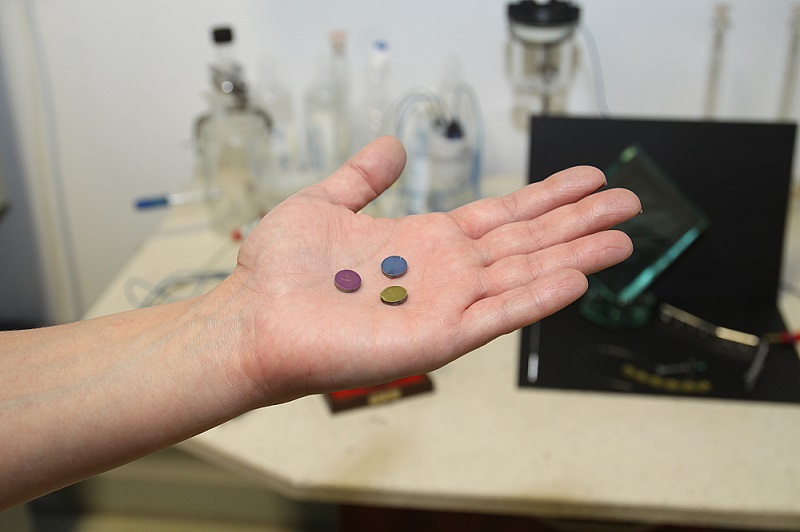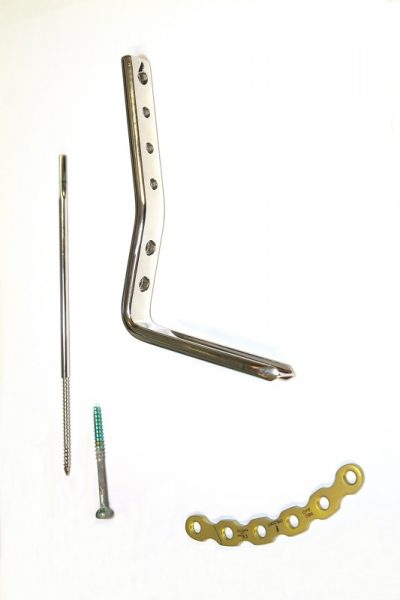| Małgorzata Kłoskowicz |
Stiff hips, muscle degeneration, a sunken chest, or impaired breathing are only a few examples how a sedentary lifestyle influences our health. If we – on a daily basis – sit a few to more than a dozen hours at work, in the car, at school, and at home, we are prone to obesity and numerous cardiovascular and musculoskeletal diseases. Therefore, it is not surprising that the demand for newer and more durable implants has grown, since they will help us to minimize the perceived consequences related not only to our lifestyle, but also to those caused by the increasing life expectancy for women and men.

Catheters, contact lenses, hip endoprostheses, or dental implants are only a few products made of biomedical materials. After becoming a part of the human body, they can improve its functioning by replacing some or parts of tissue or organs. As usual, nature is the highest and unmatched standard, however, the designed biomaterials are increasingly able to imitate human tissue. This is not only due to recreated structures and properties of certain systems, but also because of the use of substances which are naturally present in tissue, such as collagen.
How biomaterials used to e.g. produce implants are designed, depends primarily on their future place in the human body. Thus for instance, materials for hip joint endoprostheses require resistance to high mechanical loads, whereas shape-memory alloys are used for the production of coronary stents. When they are applied to narrowed veins, their diameter must be as small as possible. The implants expand to their appropriate size only under the influence of the patient’s body temperature and thus open the space between the veins’ walls.
In order to better understand what challenges scientists producing biomaterials have to face, let us take a look at dental implants. The results of their work can be observed at the Institute of Materials Engineering of the University of Silesia.
– In our research, we predominantly focus on the properties of titanium and its alloys, says Assoc. Prof. Bożena Łosiewicz who has designed and analyzed biomaterials for many years. Titanium is the most biocompatible metal. Moreover, it offers high corrosion resistance and is self-passivating which means that, in the presence of an oxygen carrier, it develops a thin oxide layer protecting the surface of the product it is made of from damage. The modification of titanium alloys by means of electrochemical methods also provides interesting solutions. Scientists from the University of Silesia in Katowice mainly resort to electrodeposition of polymer, ceramic, composite, and hybrid coatings and thus enhance the properties of the developed biomaterials.
All implants, including dental implants, which are placed inside the human body are recognized as foreign bodies. As a consequence, inflammation occurs, and the structure of neighboring tissue becomes damaged. This process is, of course, undesirable, since it might lead to various complications, including implant rejection. An interesting solution is the application of thin, porous layers on the implant which become carriers of anti-inflammatory drugs.

Firstly, the implant and the active substance directly get to the spot where inflammation is expected. Secondly, the layers are designed in such a way that the release of the substance can be fully controlled, both with regard to its dose and the administration time, so it is not possible for the patient to miss the recommended dose. Thirdly, the organism is not burdened with additional medicine in the form of tablets, and this is particularly important in the case of elderly people. Appropriately designed layers also facilitate the placement of dental implants.
– We already patented a solution which makes it possible for the coating to closely adhere to its surface and ensures that the coating is not damaged when being directly administered into the patient’s maxilla or mandible bones, says materials engineer MSc Eng. Patrycja Osak, the paten’s coauthor.
– Even the best coatings which are abraded or damaged during the procedure simply cease to fulfill their functions. Therefore, the entire implant placement process must be paid attention to, the scientist adds.
In order to achieve the best properties of their biomaterials, scientists from the University of Silesia in Katowice predominantly develop hybrid coatings which combine the properties of metals and polymers. As a result, they obtain substances with even better parameters which favor the osteointegration process, and the implant is no longer perceived by the patient’s body as a foreign body, tissue gradually regenerates, and is integrated with the implant.
– We try to imitate the best solutions proposed to us by nature, says Dr. Łosiewicz. – The application of various coatings gives us numerous interesting possibilities. We prefer biopolymers i.e. substances which occur in nature, the scientist adds. As an example, type I collagen can be named, one of the most important proteins in the human body. After being applied onto a dental implant, it accelerates the regeneration of bones and the osteointegration process, a key factor in implantology.
Currently, the team of scientists from the Institute of Materials Engineering of the University of Silesia researches titanium alloys for long-term intraosseous implants, such as joint endoprostheses or dental implants, with the use of appropriately designed coatings predominantly based on biopolymers.
The article entitled ‘The newest trends in implantology’ was published in ‘No Limits’, no. 1 (1) in 2020.
Contact
Assoc. Prof. Bożenia Łosiewicz
Institute of Materials Engineering
Faculty of Science and Technology of the University of Silesia
bozena.losiewicz@us.edu.pl





